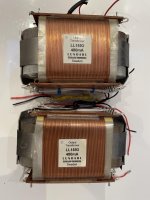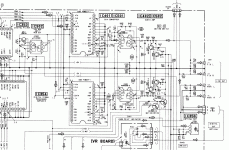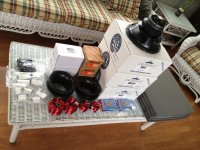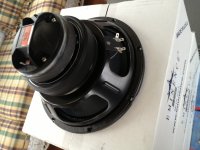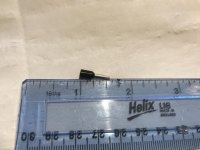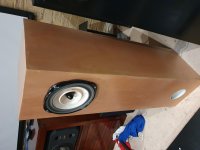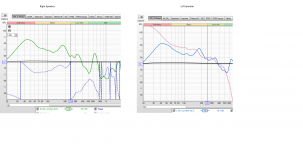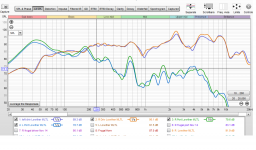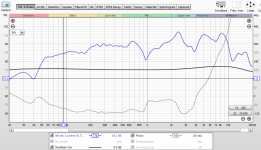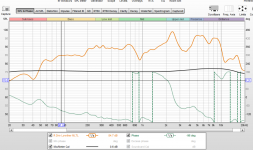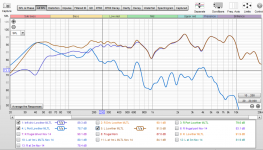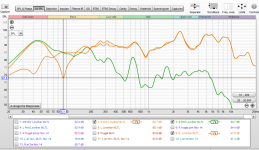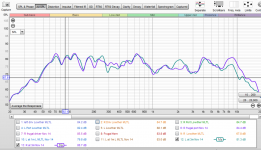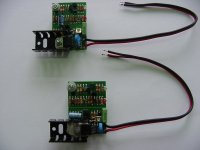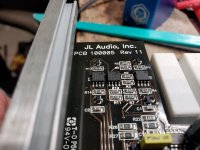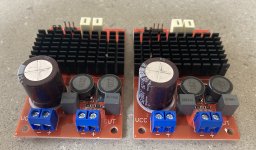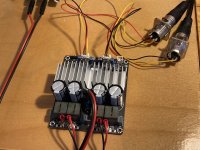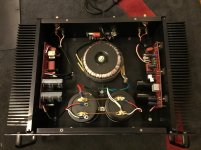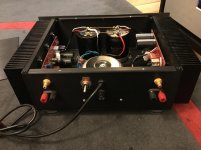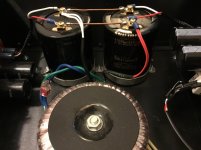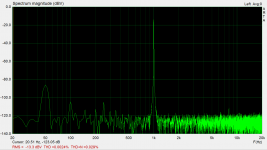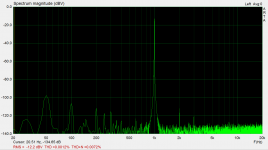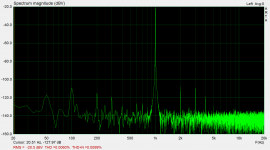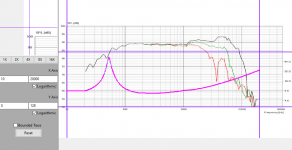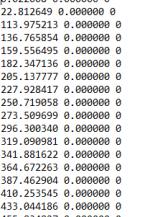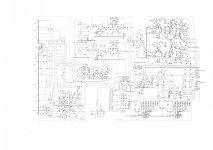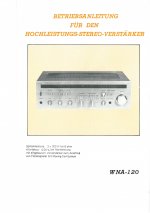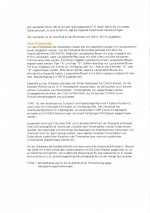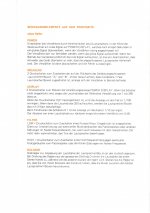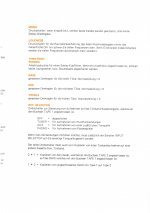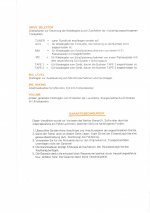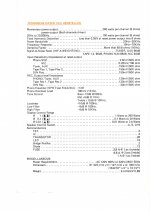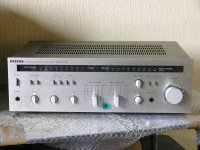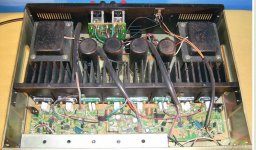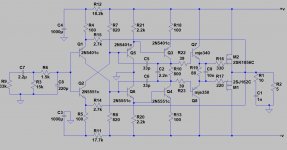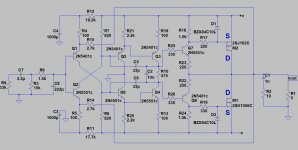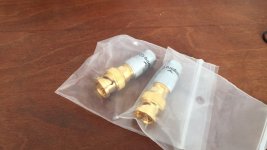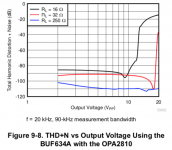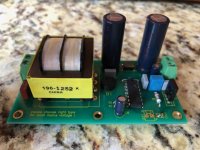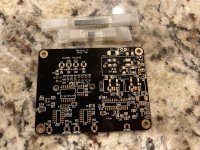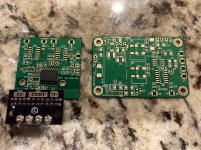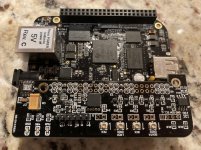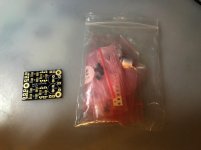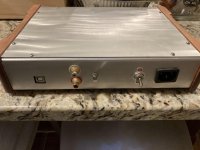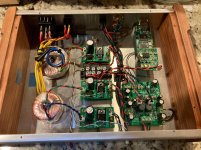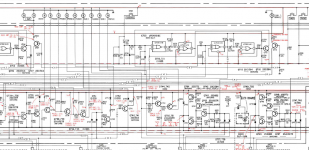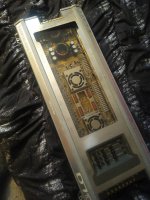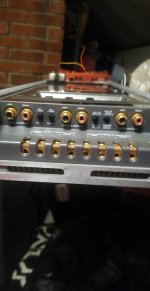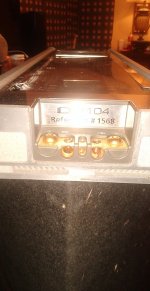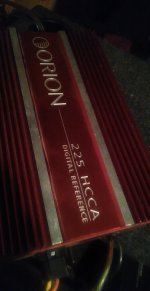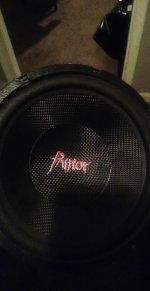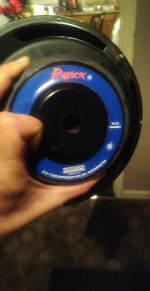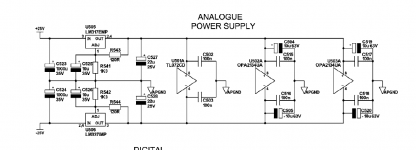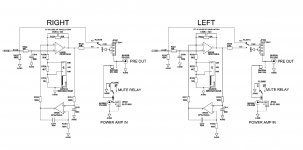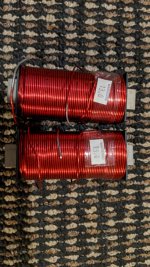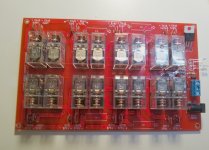So, I got a CD150 on my bench, it looks nice and clean, doesn't look very used at all, so I think it's worth restoring and modding. Laser tests out fine (eye pattern is 1,5Vpp and laser is adjusted to 55mV) and player came to me working intermittently, that is, losing track very often, especially on CD-R. Measured voltages, all normal.
I decided to clean first, obviously, laser lens and lubricate hall motor bearing. No change. Then, installed new caps on servo board first. Especially the infamous axial blue Philips cap seemed to me a possibility. But, although there was an improvement (reading CD-R better), it still lost track sometimes (especially when trying to change to a track further away). When it loses track (or is it focus? Is there a way to monitor some signal to see if focus is lost, for example? FE Lag signal? Shall I scope that?), it makes a noise (swing arm beating against limit) and stops spinning, showing Err on display. One single time, it also showed Err 18. But I can't get an error code list anywhere for this player.
So, decided to recap most important caps on decoder board and display board, too (because I remember that there are some blue axial caps in and it contains the micrcontroller, so better go on the safe side).
It now seemed a little bit better, but still would easily stop when I would try to advance to a further away track (forward or backward).
Decided to try service program - would easily go to service position 3 and, strange enough, swing arm can be moved freely all the way without ever losing track (focus?) once. I mean, I tried really a lot, and it would never happen, only, obviously if I exceeded the end of the disc (btw, what happens is very similar to the intermittent problem while track changing). But the noise the swing arm makes when I command it back and forth in this service position, it's different from the noise it makes when it loses track while changing track manually in normal operation. Let me explain: in service position 3, it moves in 64 steps according to SM (you can hear that). When normal operation and I tell it to advance, say, 5 tracks, it makes like a sweeping, almost singing sound until it arrives and then seems to "lock in" and then starts playing. In the even of losing track, the same happens, except that close to the end of the movement, the singing gets deeper in sound and then it loses its position and bangs against the limit, disc stops and shows Err.
Strangely enough sometimes it works well and even manages to travel from track 1 to 20 and later back to 1, for example, without failure, several times in a row.
I don't have any CDM-2 based player here at the moment (the RAFOC is CDM-4), so I can't compare: is it normal for them to "sing" while the swing arm is moved further away during changing track manually? CDM-4 based players usually don't do this, for what I know, or just a little. Could this be some kind of parasitic oscillation of the radial servo? I mean, the easiest way to make the intermittent problem happen is when doing search forward or backward, first, it moves in steps like in service position (no singing sound), then it advances more, starts to sing here (and normally not loses track), but as soon as it advances very quickly, there it often loses track after some seconds. There, the sound is stronger and deeper.
To eliminate mechanical failures, I disassembled the whole RAFOC, cleaned and lubricated, nothing looked wrong, also cleaned the inner laser lens of the pickup.
What is strange with this behavior, is that it hasn't failed reading TOC once.
Or starting to play when press Play, never fails.
Tomorrow I will try to let it play alone a few discs from start to end to see if it fails on its own or if this only happens when we change the track.
Any ideas?
P.S: I might have found something by mere chance: in SM for another philips player based on CDM-4, it says as explanation for one of the errors: No TL pulse received within 0,5 sec during track jumping. Check the RE Lag circuit (Error during Search or Next/Previous).
This one sounds exactly like what is happening with this player! When I find some time, I will try to measure the TL signal. I'll also check the RE lag circuitry, which is explained in the SM, I think I'm onto something here.
